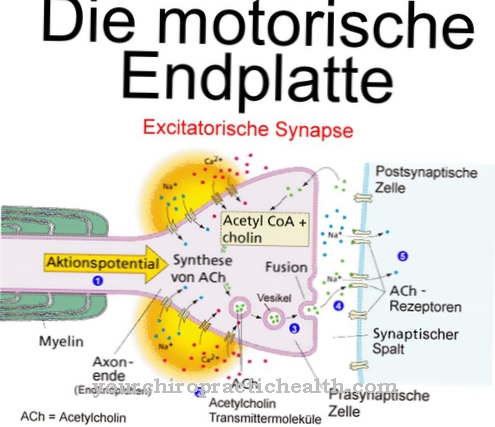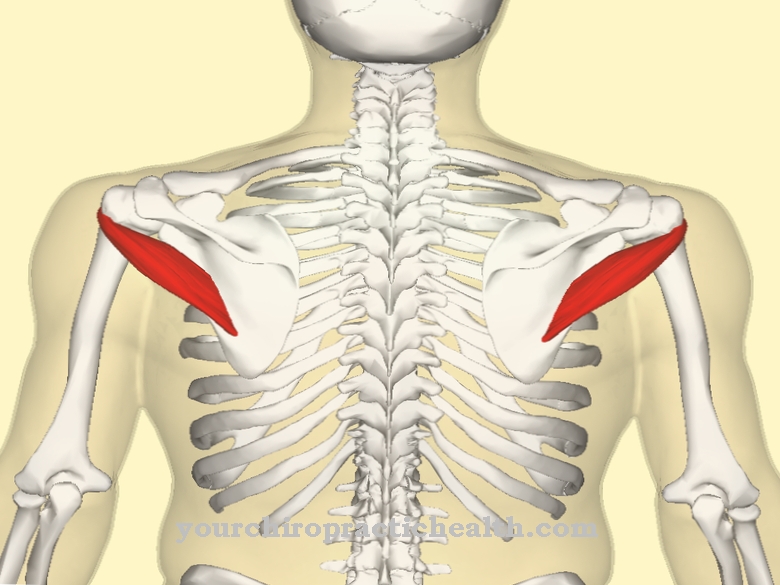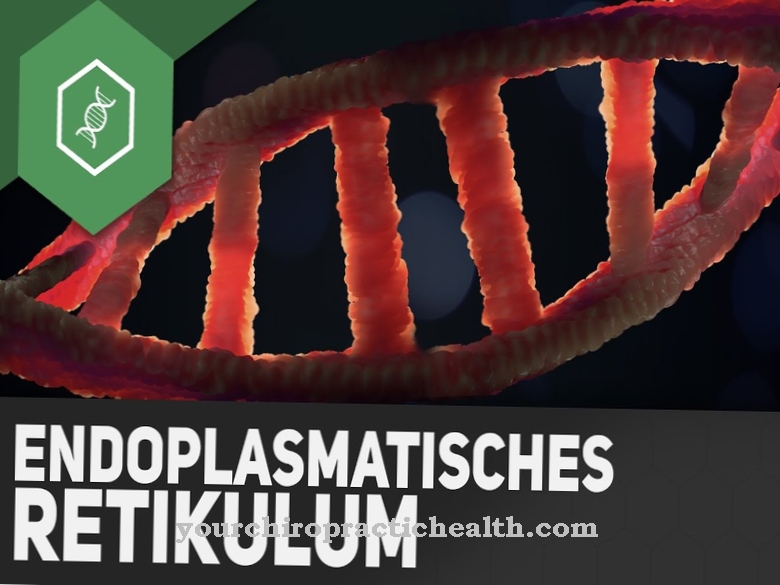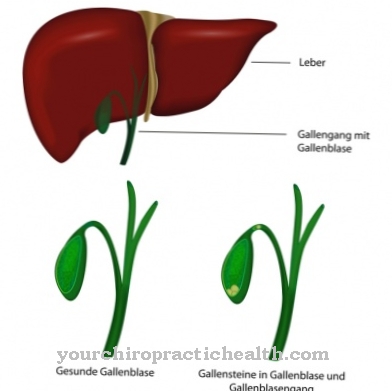At the Tegmentum is part of the brain stem that includes the midbrain, pons, and elongated medulla. It contains numerous core areas (nuclei) and nerve tracts, some of which exercise motor, some sensory or sensitive functions. Nonspecific lesions on the tegmentum can occur, for example, as part of a stroke, a neurodegenerative disease or as a result of mechanical injuries.
What is the Tegmentum?
The word "Tegmentum" comes from Latin and literally means "hood". The Tegmentum owes its name to the fact that it forms a coherent layer that appears to be attached. The anatomical structure is composed of three parts that extend over the midbrain, bridge and elongated medulla.
All three areas belong to the brain stem, which is also known as the cerebral trunk or the encephalic trunk. In the embryo, this area of the brain develops from the second and third cerebral vesicles, with the cerebellum being excluded from the brain stem. The tegmentum connects to the internal liquor space, which is formed by the four cerebral ventricles together with the spinal canal (central canal).
Anatomy & structure
When the tegmentum is mentioned in general, the tegmentum mesencephali or the midbrain dome is often meant; in the narrower sense, however, the mesencephalic tegmentum is only one of three parts of the tegmental area.
The other two areas form the tegmentum myelencephali (posterior brain hood) and the tegmentum pontis (bridge hood). The tegmentum myelencephali belongs to the elongated medulla (medulla oblongata), while the tegmentum pontis is part of the bridge (pons).
The cerebral crura (crura cerebri) and the aqueductus mesencephali adjoin the tegmentum mesencephali in the midbrain, on the other side of which the tectum mesencephali lies opposite the tegmentum mesencephali. In the bridge and in the elongated medulla, the tegmentum lies in the posterior area of the structures. All three parts of the tegmentum house different core areas and nerve pathways. Because of the insulating layer that surrounds the nerve fibers, neurology also refers to them as white matter, while the core areas consist of clusters of nerve cell bodies known as gray matter.
Function & tasks
The fifth cranial nerve (triplet nerve, trigeminal nerve) has its origin in the tegmentum. Its motor fibers originate from the nucleus motorius nervi trigemini, whereas the sensory fibers arise from the nucleus spinalis nervi trigemini in the elongated marrow, the nucleus principalis nervi trigemini in the pons or the nucleus mesencephalicus nervi trigemini in the midbrain.
Like the trigeminal nerve, the medial loop (lemniscus medialis) runs through the entire brain stem. The core areas of the medial loop path lie in the elongated marrow, but their course leads them through the bridge and the midbrain to the thalamus.
The nucleus caeruleus or locus caeruleus is located in the tegmentum pontis. It belongs to the reticular formation, which is a network of nuclei and other neurons. His job includes attention and orientation control, for which he is not the only one responsible. The sixth cranial nerve (abducens nerve) controls certain eye movements, while the seventh cranial nerve (facial nerve, facial nerve) not only carries motor but also sensory, sensory and parasympathetic nerve fibers. The motor fibers of the facial nerve participate in the control of facial expressions, hearing, speaking, opening the jaw and swallowing. The nuclei of the eighth cranial nerve (auditory nerve, vestibulocochlear nerve) are also located in the pontium tegmentum.
Among other things, the substantia nigra, which belongs to the extrapyramidal motor system and is involved in movement control, is located in the tegmentum mesencephali. The ruber nucleus is also part of this system. In addition, the tegmentum mesencephali is home to the nucleus nervi oculomotorii and the nucleus accessory nervi oculomotorii; both are responsible for eye movements. The nucleus nervi trochlearis is the motor core of the fourth cranial nerve (nervus trochlearis), which is involved in controlling eye movements. In addition, numerous other fibers run through the mesencephalic tegmentum.
Diseases
The nuclei of the abducent nerve in the tegmentum pontis can suffer damage as part of a skull base fracture, which leads to double vision and impaired eye movements.
The trochlear nerve can also be the cause of disorders that affect eye movements: Typically, when the trochlear nerve is damaged, the eye turns upwards medially. Lesions on the facial nerve may be due to tumors, bleeding, Lyme disease, a petrous bone fracture, or a stroke and often result in facial paralysis. The trigeminal nerve can also be responsible for paralysis; Damage to it also allows for sensory disturbances on the face.
Functional restrictions of the nerves and their core areas can come about in different ways. One possible cause that can affect any area of the tegmental area is stroke. In this case, the occlusion of a blood vessel that supplies the brain leads to an undersupply and corresponding failures in the affected areas of the brain. This damage can be permanent if the undersupply leads to the death of the nerve cells, which is the case with long-term circulatory disorders. In order to limit the damage, rapid action is therefore required in the event of a stroke.
Another example of a disease that affects the tegmentum is Parkinson's disease. It is based on the loss of nerve cells in the substantia nigra and manifests itself in the form of muscle rigidity (rigidity), muscle tremors (tremor), slowing of movements (bradykinesia) and postural instability. Furthermore, other neurodegenerative diseases such as Alzheimer's dementia or multiple sclerosis can affect the gray and white matter of the tegmentum.













.jpg)

.jpg)
.jpg)











.jpg)